Gotham City isn’t just a location on a map; it’s a character as rich and storied as the Dark Knight himself. Through the decades, Gotham has evolved and transformed to reflect the different eras and artistic tastes of comic book creators. It’s always been plagued by villains, but you can feel the unique quirks and differences between the Gothams of different eras.
The variations in Gotham’s aesthetics are perhaps most distinct in the many onscreen adaptations of Batman, where filmmakers’ various styles have a massive influence on the city’s appearance. Joel Schumacher’s films are filled with as much pop and color as a comic book, while Nolan’s gritty Gotham feels like a real city in our own world. Take a journey through the many iterations of Gotham, and learn what inspired them all.
1. Gotham City Is ‘Manhattan Below Fourteenth Street At Eleven Minutes Past Midnight On The Coldest Night Of November’
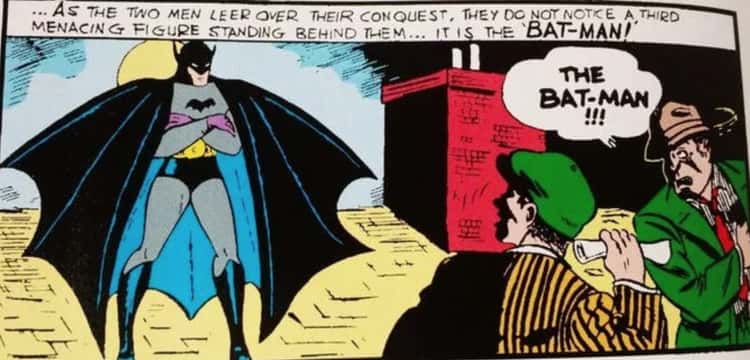
Since its very inception, Gotham City has always been an analog for New York City. Batman writer Dennis O’Neil has described the city as “Manhattan below Fourteenth Street at eleven minutes past midnight on the coldest night of November.”
In many ways, the early writers of Batman were really writing about the world around them. Many of them worked out of Times Square, so setting the series in a world inspired by the seedier side of New York came naturally to them. New York has even been called “Gotham” in the past, although the origin of the nickname isn’t particularly flattering. The name comes from the village of Gotham, a small town in England whose residents had a historical reputation for madness.
2. The 1943 ‘Batman’ Serial Was More Of A WWII Allegory Than A Comics Adaptation
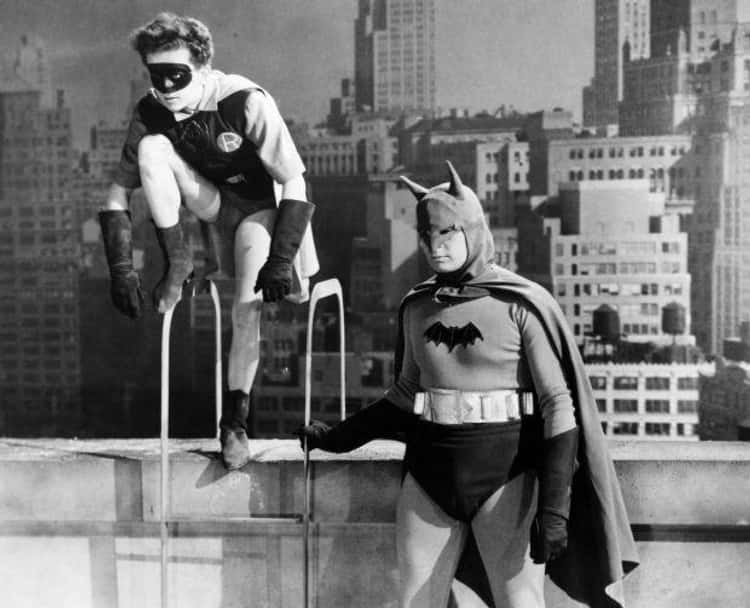
Mostly forgotten in modern pop culture, 1943’s The Batman serial was the first appearance of the Dark Knight on film. While it still featured Bruce Wayne taking down villains in Gotham City, the aesthetic of the city was largely sidelined to make way for B-movie action and WWII propaganda. The series was developed more as a way to drum up support for the WWII effort than to properly adapt the source material, and there were a lot of questionable decisions made in the process.
For one, the villain is a racially insensitive depiction of a Japanese evil genius named Dr. Daka Daka. The cheap production quality of the time is also a big factor in the lazy appearance of Gotham. Even Batman’s costume is a loose-fitting abomination of fashion.
3. The 1960s TV Series Replicated The Bright Color Palette Of The Comics Very Literally
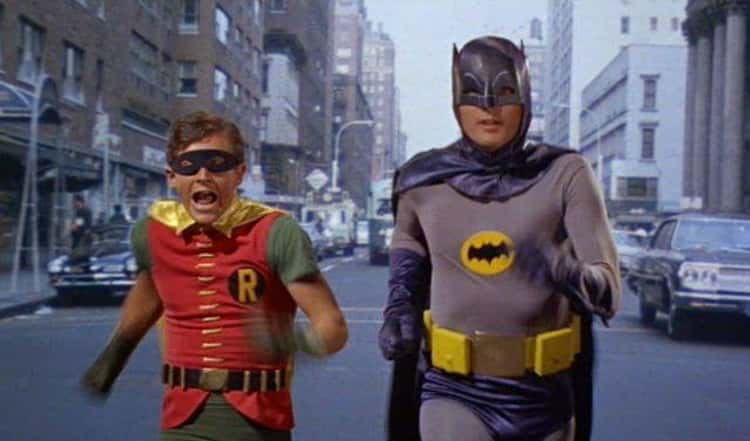
The original Batman television series is remembered as a hokey yet charming adaptation of the comics, but it’s not a very faithful one. “Gotham City” as a unique entity barely exists in the show, as the series was filmed primarily around various sound stages and locations in 1960s Los Angeles.
The creators did try to remain faithful to the comic’s overall aesthetic, hence the bright colors and zany costumes. The storylines of the Batman comics of the time were also much lighter than those of the 1940s, which added to the light atmosphere. At the time, the Batman television series was considered one of the most accurate comic book adaptations ever.
4. Tim Burton’s Gotham Looks Like ‘Hell Burst Through The Pavement And Grew’
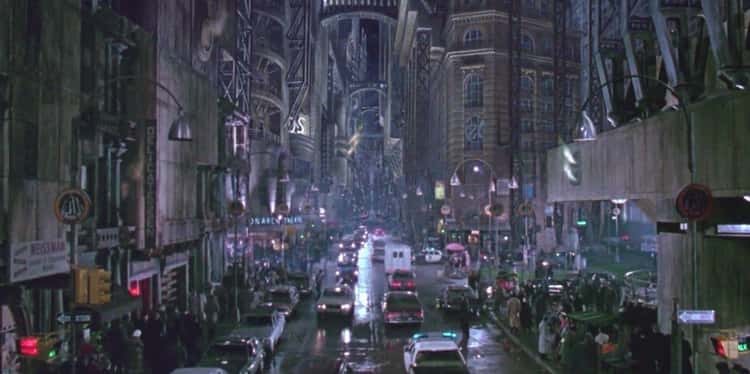
There had been a few different Batman screen projects before Tim Burton’s version hit the big screens in 1989, but few took the world by storm the way this particular adaptation did. Production designer Anton Furst won an Oscar for his live-action reimagining of Gotham City, and for good reason. He looked to early 20th-century Futurist artists for influence, as well as to German filmmaker Fritz Lang.
Furst’s Gotham definitely evokes imagery from Lang’s Metropolis. Harsh, dramatized edges make the city look sharp and uninviting. Burton allegedly told Furst he wanted Batman’s hometown to look like “hell burst through the pavement and grew.”
The Gotham of Burton’s film was also heavily inspired by New York City. References to then-mayor Ed Koch are included, as well as a not-so-subtle reference to the “Fuggenheim” museum.
5. In ‘Batman Returns,’ Gotham Adopts Fascist Statues And The Menacing Lines Of Precisionism
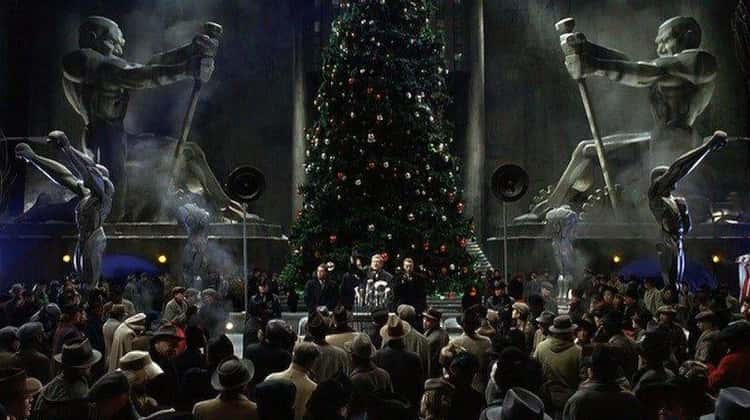
While Furst’s Gotham was critically acclaimed, Burton wanted to go in a different direction for Batman Returns. He went to his friend and collaborator Bo Welch for the new film, and told Welch to disregard everything Furst had done. Welch told the LA Times:
I wanted to give it a different feeling because I didn’t really enjoy the last Batman that much… One thing I tried to do was give the film a bigger feeling because the city in Batman didn’t feel big to me – it didn’t have the power an old American city has.
Welch wanted the city to feel darker, so he designed a cityscape filled with towering skyscrapers that physically blocked the sunlight. He also took inspiration from the menacing fascist architecture of the Third Reich:
In preparing for the film, however, the first question I asked myself was how can I create a visual expression of corruption and greed? That got me thinking about the fascistic architecture employed at world’s fairs… That feels corrupt because it’s evocative of oppressive bureaucracies and dictatorships… So I looked at a lot of Nazi art and images from world’s fairs.
6. ‘Batman: The Animated Series’ Drew From The Art Deco Of 1940s New York
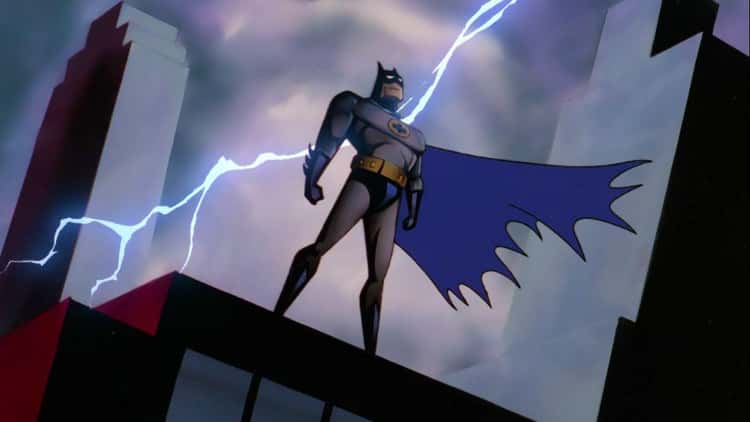
In the 1990s, Bruce Timm’s Batman: The Animated Series fundamentally changed the way we saw Batman portrayed on the screen. It was one of the most character-focused adaptations of the comics at the time, and its minimalist visual aesthetic matched well with the characters.
In an interview with Vulture, Bruce Timm explained the influences that inspired the world of the animated classic:
Just make it a simple shape. That was [co-creator Eric Radomski]’s and my basic idea for the entire series, to simplify everything. The characters and the vehicles and the props and the cars and everything – just boil everything down to its essential ingredient. We both were big fans of the Fleischer Studios cartoons from the 1940s. It was a combination of that and film-noir movies and things like Citizen Kane.
7. Joel Schumacher Took Gotham In A Much More Colorful, Fantastical Direction To Match His Films’ Absurd Tone
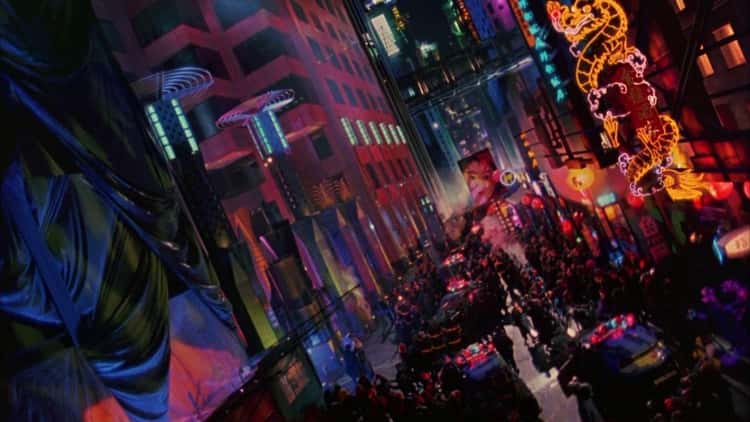
After Burton’s take on the Dark Knight, director Joel Schumacher took Gotham in a much more fantastical, neon-accented direction. Schumacher wanted to move away from the macabre portrayal of Gotham, saying, “I didn’t want it to be just monolithic or Gothic structures, I wanted it to have some life to it.”
Schumacher’s Gotham was in many ways more wholesome and less complex, serving as little more than a backdrop to the absurd antics of its characters. The art department was encouraged to reinvent the city without taking the previous movies into consideration, and they chose to go in a colorful and flamboyant direction.
8. The Futuristic Aesthetics Of ‘Batman Beyond’ Were Influenced By Neo-Noir Classics Like ‘Blade Runner’ And ‘Akira’
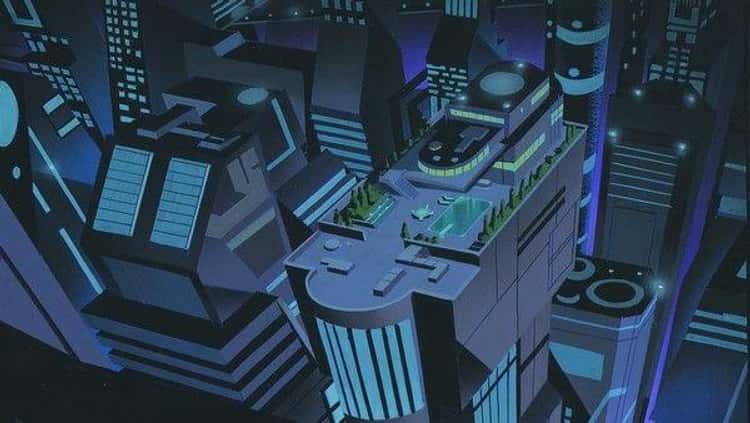
Batman Beyond is the sequel series to Bruce Timm’s Batman. It takes place in a futuristic Neo-Gotham where Bruce Wayne is retired as Batman and coaching Terry McGinnis, the successor to his brooding mantle. Designer Glenn Murakami worked with Timm to create the look of Neo-Gotham, which takes equal inspiration from both the science fiction and noir genres.
Films like Akira and Blade Runner served as visual jumping-off points for the creators – which are fairly adult influences for a show originally designed for children. Executives at Warner Bros. had been wanting to make a young Batman show for some time before Batman Beyond was even a thought, but the showrunners were concerned about the expectations that would come with portraying the story of a young Bruce Wayne.
9. The Nolan Films Scrapped The Cartoon Look For The Angles, Alleys, And Architecture Of Chicago
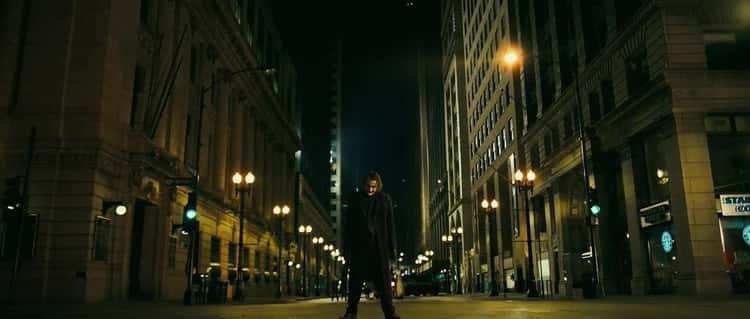
Christopher Nolan’s The Dark Knight trilogy holds its own special place in the Batman fandom, not in the least for its grim and gritty portrayal of Gotham City. In Batman Begins, Nolan introduces Gotham as a sort of hybrid city with influences from both New York and Chicago. By the time The Dark Knight was in production, Nolan had been so taken by Chicago that he decided to base Gotham entirely around the Windy City.
The sequel’s location manager, James McAllister, described how the city inspired the film: “Everywhere you look is a good angle. Visually it’s that look like you would see in the comic books. You can see all the way down the street and you can turn a corner and you’re under the El or in an alley that’s dark.”
That functionality was crucial when trying to turn a comic book into a real, living city. Batman is infamous for fighting bad guys in back alleys, but New York doesn’t really have all that many alleys in real life. Chicago is full of them, and the city’s long history of mob activity served as another source of inspiration. Top that off with its unique, modern architecture, and Chicago became the obvious choice for the filmmakers.
